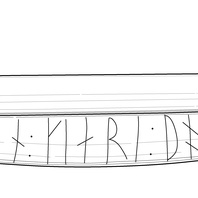
Viking Designs
Drawing of the Thorfast Comb Case
A bone comb case with a runic inscription which reads ‘Thorfast made a good comb’. It is unknown whether the runes were inscribed by Thorfast himself as advertising, or whether the owner inscribed them to remind them where to go for another good comb if they needed one.
Read More
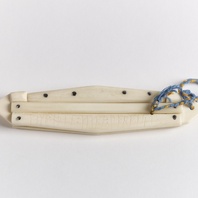
Viking Objects
Reproduction Bone Comb with Runic Inscription
A bone comb with a case with a runic inscription on it. The inscription reads, in translation, “Thorfast made a good comb.” The Vikings had a reputation for looking after their personal hygiene. Combs were an important part of that process, not just for combing your hair but also for removing nits and lice.
Read More
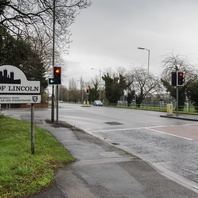
Viking Names
Lincoln
Lincoln is one of the Five Boroughs of the Danelaw. The original name is derived from pre-English lindo, pre-Welsh linn ‘a pool’, which likely refers to the broad pool in the River Witham, now known as Brayford. The pre-English form of Latin colonia was added after the establishment here of a settlement of legionaries in succession to the earlier fortress.
Read More
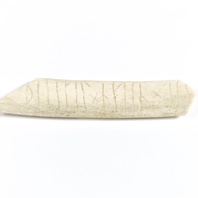
Viking Objects
Reproduction Rune Inscribed Rib
Runes were used not only for monumental inscriptions, or to mark ownership of valuable objects, but also in more informal contexts. In this case the animal bone suggests an after-dinner pastime after a good meal in the Anglo-Scandinavian trading centre of Lincoln. The runes read ——l × hitir × stin × … Only two words of the Old Norse inscription can be read with certainty, and even so they are ambiguous. One possible interpretation is ‘[someone] is heating a stone’ the other is ‘[someone] is called Stein’. The bone is fragmentary, but the inscription may never have been intended to make much sense. The original object dates from around the tenth century. It is one of only three runic inscriptions from the East Midlands.
Read More
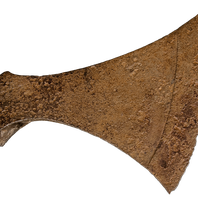
Viking Objects
Socketed Axe (LCNCC:1906.9661.2)
This large socketed iron axe head was found in the River Witham, east of Lincoln, Lincolnshire. Axes were not only a common implement used for a variety of wood-based activities, such as constructing ships, but also were often used as weapons. Axes came in a variety of shapes and sizes depending on their function. Considering the size and shape, this axe was most likely used for warfare rather than as a tool.
Read More
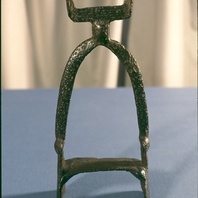
Viking Objects
Stirrup (LCNCC : 1906.9663)
A large iron stirrup of Viking type with a long slender looped form, rectangular terminal, and a flat footrest. It was found in the River Witham near Lincoln. Stirrups like this were an innovation that Scandinavian settlers introduced to Anglo-Saxon England in the eleventh century.
Read More

Viking Objects
Bone Comb with Runic Inscription (1867,0320.12)
An original bone comb case with a runic inscription on it which reads, in translation, “Thorfast made a good comb.” The Vikings were known for looking after their personal hygiene. Combs were not only used for combing your hair but also for removing nits and lice.
Read More
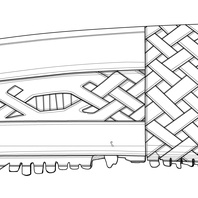
Viking Designs
Drawing of Bone Comb
A drawing of an intricately decorated bone comb found in Lincoln.
Read More
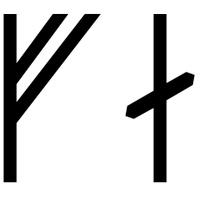
Viking Names
Thorfast
Þorfastr is a common male name in the eastern part of the Viking world – it is common in Swedish runic inscriptions and is even found in the inscription on a rune-stone fragment found in Finland, as well as a couple of Danish ones, but it does not occur in any Norwegian or Icelandic texts. It can be found in the runic inscription on the Lincoln comb-case.
Read More
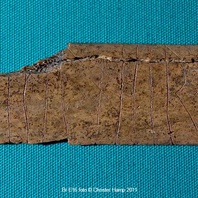
Viking Objects
Rune Inscribed Rib (LCNCC : 1999.103.104)
Runes were used not only for monumental inscriptions, or to mark ownership of valuable objects, but also in more informal contexts. In this case the animal bone suggests an after-dinner pastime after a good meal in the Anglo-Scandinavian trading centre of Lincoln. The runes read ——l × hitir × stin × … Only two words of the Old Norse inscription can be read with certainty, and even so they are ambiguous. One possible interpretation is ‘[someone] is heating a stone’ the other is ‘[someone] is called Stein’. The bone is fragmentary, but the inscription may never have been intended to make much sense. The object dates from around the 10th century. It is one of only three runic inscriptions from the East Midlands.
